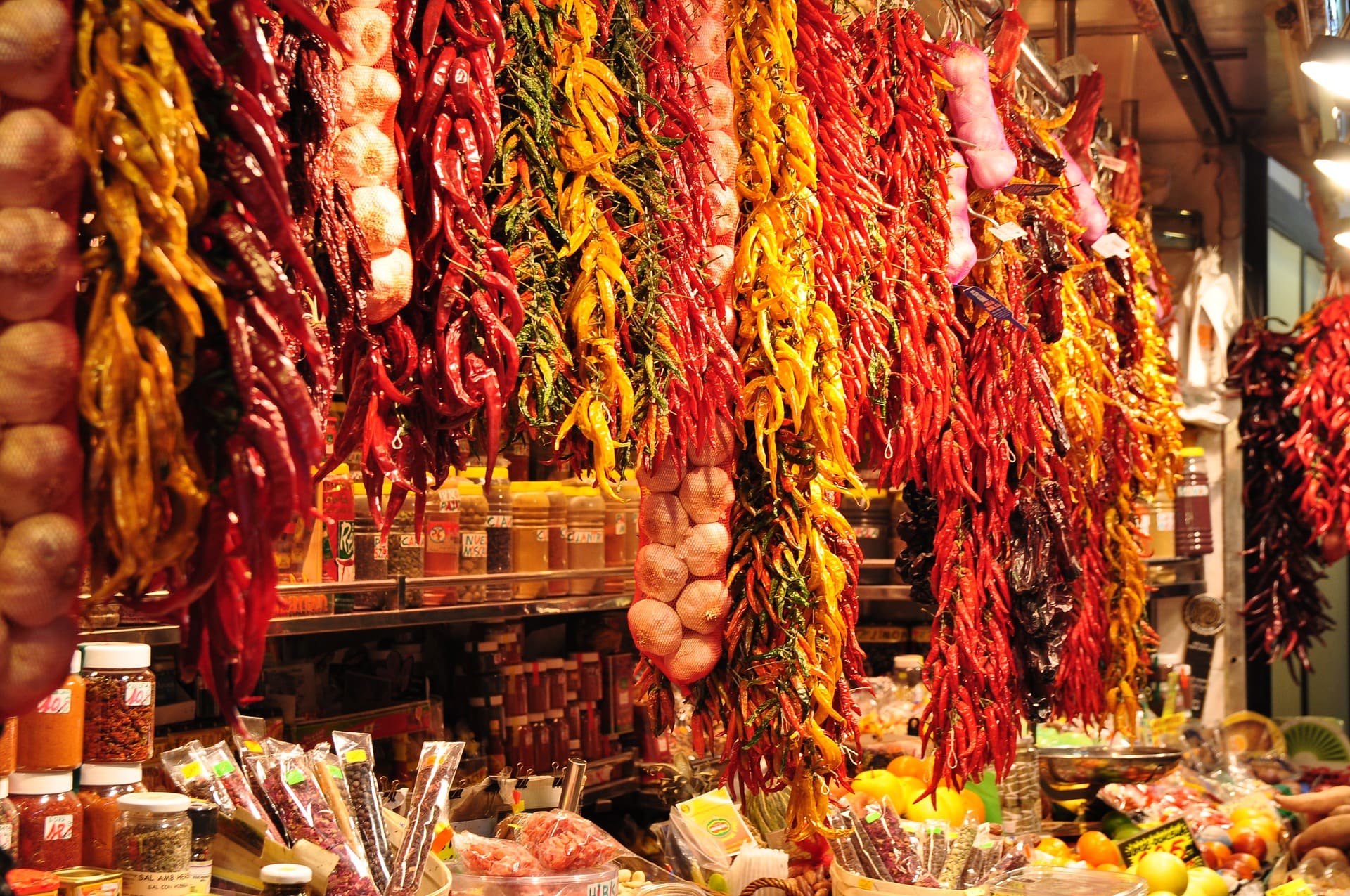Spain and Portugal are home to a variety of native peppers that play a crucial role in the region’s gastronomy. From deep red to light green in color, mild in flavor or extremely spicy, this vegetable is a staple in many regional dishes. Praised for their quality and versatility, these beloved vegetables take center stage when they are in season, and they are celebrated by the community at local festivals. Spain grows an array of peppers that are regulated by the IGP quality seal, guaranteeing their authenticity.
Below are some of the most noteworthy varieties:
The ‘pimiento riojano’ is grown in the central wine producing region of La Rioja, since the middle of the 19th C. You can find this red pepper sold fresh, and most locals fire roast them and preserve in jars. Roasting them in a wood-burning oven preserves their color and texture and provides a rich flavor. The entire process is done by hand, from cultivation to peeling and seeding.
The ‘piquillo de lodosa’ is grown next door in the region of Navarra. These peppers are small, red, and triangular, with a sweet and slightly tangy flavor. Similar to the ‘pimiento riojano’, they are roasted over a direct flame and peeled one by one. Next they are packed in jars in their natural juices, making it a high-quality ingredient available all year. Piquillo peppers are very versatile- stuffed with meat or seafood, served with rich tuna belly or greens as a salad, or even piled on crunchy toast.


‘Pemento de Oimbra’ is a pepper grown in southern Galicia next to the border with Portugal. Its characteristic light green color and elongated shape is used to make sauces, roast whole, or sauteed with other vegetables.
Crossing into Portugal, the guindilla pepper is a popular variety that adds heat and flavor to many traditional dishes. These slender, red peppers are often pickled and served as a condiment or used to infuse oils and vinegars. In Portuguese cuisine, these peppers are used to enhance dishes like bacalhau (salt cod) and various seafood stews, providing a spicy kick that complements the flavors of the sea. Their fiery nature and versatility make guindilla peppers a beloved ingredient in Portuguese kitchens.
Perhaps the most internationally recognized Portuguese pepper is the piri-piri. Originally from Africa, the pepper was embraced by Portuguese explorers and has since become a staple in Portuguese cuisine. These peppers are the key ingredient in piri-piri sauce, a spicy marinade used for grilling chicken and seafood. This sauce, with its intense heat and vibrant flavor, has gained popularity worldwide.

